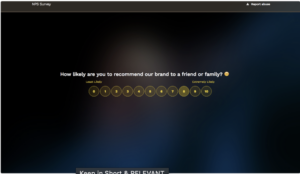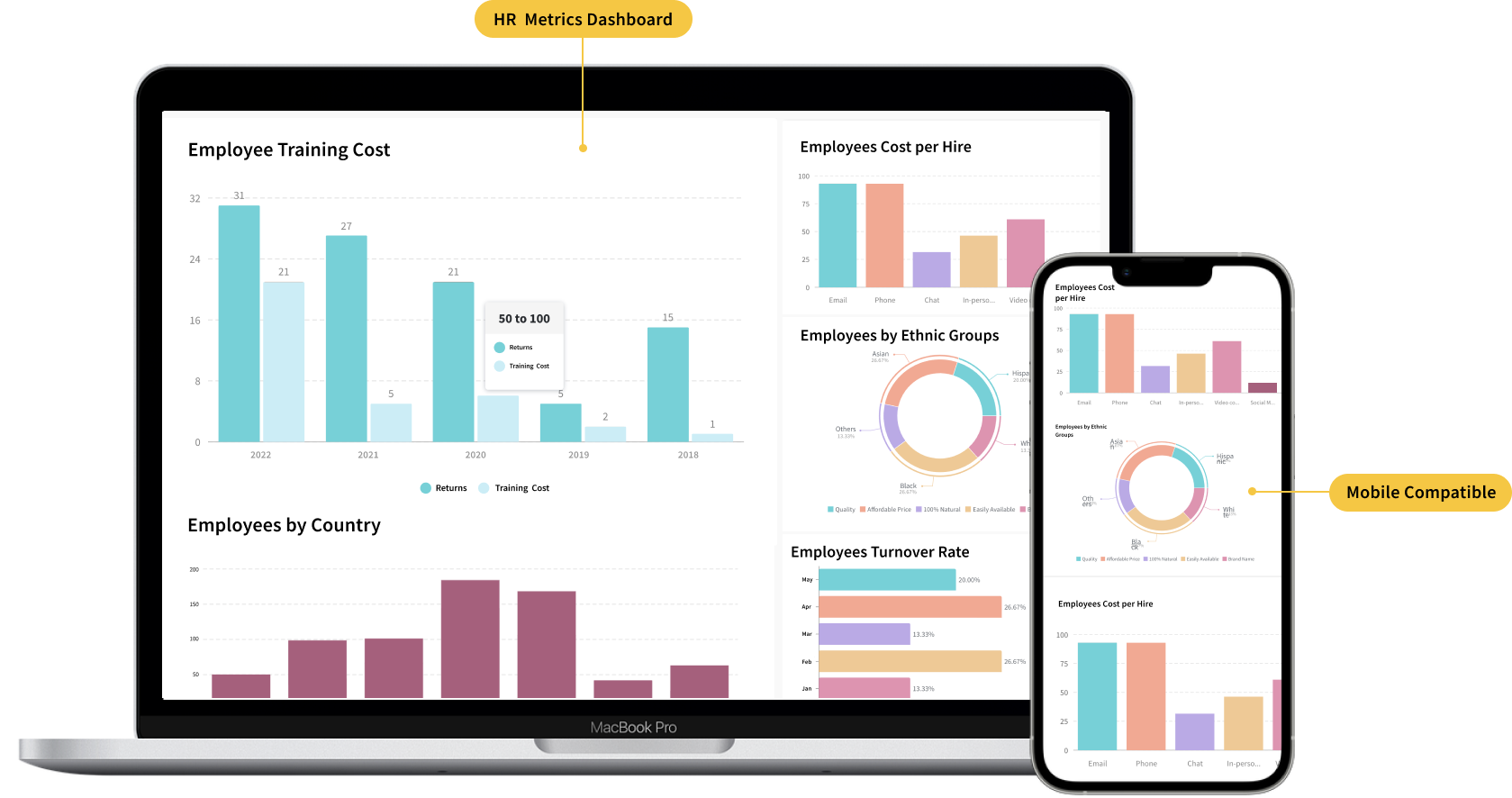What Is Customer Intelligence (CI)? & Why It Is Important
Chris Thomas
Last Updated: 5 November 2024
14 min read

Despite what you might be thinking, the phrase customer intelligence doesn’t have anything to do with your customers’ IQ levels!
Instead, customer intelligence is all about gathering data to understand better why customers act as they do. In turn, businesses can use these data points to predict customer actions better and improve the customer experience. But how is this achieved, exactly? How do customer intelligence insights lead to better business outcomes? How do you study customers to develop intelligence data in the first place?
Let’s dive in and take a look!
What is Customer Intelligence?
In today’s digital-driven world, customers share information about themselves every time they interact with your business.
They share their interests, their demographic details, their preferences, their needs, and their wants.
Customer intelligence is the collection and analysis of this data. With this data, companies can make more informed improvements to their current processes. For instance, customer intelligence insights can help provide a more accurate approach to customer personalization.
Further customer experience improvements can be made by creating more precise customer personas. It means businesses can analyze past behavior and better predict the likelihood of their customers’ future actions.
Why is Customer Intelligence Important?
Customer Intelligence (CI) is the process of collecting, analyzing, and interpreting data about customers in order to better understand their behaviors, preferences, and needs. This understanding then guides businesses in making informed decisions about their products, services, and marketing strategies.
Customer Intelligence (CI) is more than just data collection. It’s the art of extracting vital insights that can reshape businesses. By diving deep into customer data, companies gain insights into consumer habits, desires, and requirements. This knowledge is golden.
It shapes product innovation, sharpens marketing tactics, and ensures services meet customer desires. In today’s crowded market, a personalized touch sets brands apart. It builds lasting customer bonds and bolsters loyalty. In essence, CI isn’t just a tool. It’s a game-changing strategy for brands aiming to stand out and remain agile in our ever-evolving market.
What are the Benefits of Customer Intelligence?
In an era where every customer interaction counts, diving deep into the heart of consumer behavior is paramount. Leveraging Customer Intelligence (CI) means moving beyond traditional metrics and venturing into profound insights and foresight. It’s not just about understanding your audience; it’s about predicting, personalizing, and elevating every touchpoint.
Customer Intelligence is crucial because:
- Personalization: Tailors products, services, and communications to individual customer preferences.
- Informed Decision Making: Offers actionable insights that guide business strategies.
- Predictive Analysis: Anticipates future customer behaviors, enabling proactive actions.
- Increased Loyalty: Enhances customer satisfaction, leading to stronger loyalty.
- Optimized Marketing: Identifies the most effective marketing channels and tactics.
- Enhanced Product Development: Guides product improvements based on actual customer feedback.
- Competitive Advantage: Provides deeper insights into customer behaviors, giving businesses an edge over competitors.
- Higher ROI: Improves returns on investments by targeting resources more effectively.
- Reduced Churn: Identifies at-risk customers, allowing for timely interventions.
- Improved Customer Experience: Enables businesses to meet or exceed customer expectations consistently.
Want to know more? Hop on a demo session with our product specialists!
signup_component]
How Do I Collect Customer Data?
In simple terms, customer data can be collected using various customer experience technologies.
Here are some of the most commonly used technologies at your disposal:
- Enterprise survey software
- Feedback management software
- Social media listening software
- Natural Language Processing (NLP) software
- Analytics and data management software
What Are the Benefits of Customer Intelligence Insights?
When it comes to customer data analysis, your business has many benefits – from predicting customer behavior to fostering customer loyalty.
Let’s take a look at the core benefits in turn.
1. Customer Intelligence Strategies Capture More Data
As we’ve seen, there are various ways in which you can collect data to provide actionable insights for your business.
That said, the data collected from these sources can sometimes get confusing – especially if you’re keeping track of multiple channels. For example, structured data from analytics tools can certainly improve customer experience, but what about unstructured data like long-form survey comments?
Customer experience survey platforms can make collecting this kind of data easy.
What’s more, customer insights are more complete and accurate when using such tools. It means customer experience improvements can be actioned across all customer touchpoints with ease.
14-day free trial • Cancel Anytime • No Credit Card Required • No Strings Attached
2. Customer Intelligence Improves Personalization
68% of consumers will spend more with brands that ‘understand and treat them like individuals.’
Analyzing customer data can significantly improve how you gather the insights necessary to foster these relationships. In fact, it can help you move from offering standard personalization to hyper-personalization.
What’s more, this data can also reveal actionable insights that you can use to improve your efficiency and profitability. This is achieved through the creation of more accurate customer segments.
Many companies claim to know what their customers want, but analyzing data points enables you to focus on the most profitable products and services.
3. Customer Intelligence Improves Retention
Customer retention is a vital metric to measure. After all, retaining customers is far more cost-effective than acquiring new ones.
In fact, signing up new customers can cost as much as 5x more!
Customer intelligence helps you improve this metric through root-cause analysis.
Behavioral data is a powerful indicator of how your customers are going to act in the future. By analyzing this data, you can pinpoint common customer behavior patterns.
From there, these data sets enable you to avoid any issues, whether a breakdown in customer relationships or a fundamental problem with your product.
It allows you to make the necessary changes to prevent further customer losses.
4. Customer Intelligence Improves Product Decisions
The insights you collect through customer intelligence can also aid the development of your product strategy.
Customer pain points and preferences are some of the best sources for innovation. As Bill Gates says, “Your most unhappy customers are your greatest source of learning.”It means that negative feedback can be an opportunity for your business. After all, a more intuitive and helpful product will always be an easier sell – both for customers and your sales team.
How to Measure Customer Intelligence Using SurveySparrow?
Having navigated the intricate world of business and customer relationships for over a decade, I can affirmatively state that the measure of customer intelligence has evolved. It’s no longer about simple metrics; it’s about depth, context, and foresight. As businesses have grown to recognize the immense value of truly understanding their customers, so too have the methods and tools to measure this critical intelligence.
Let’s dissect some of the most effective strategies and see how SurveySparrow can help you here.

- Behavioral Analytics: Dive into the raw data. What are your customers doing on your website or app? Tools like Google Analytics or Mixpanel provide insights into user pathways, bounce rates, and conversion funnels. But it’s crucial to collect the data and interpret it meaningfully.
- Sentiment Analysis: Beyond just numbers, gauge how your customers feel. Sentiment analysis tools scan customer reviews, social media mentions, and other digital interactions to quantify the positive, negative, or neutral sentiments associated with your brand.
- Customer Surveys and Feedback: Old school, yet invaluable. Direct feedback provides unfiltered insights into customer perspectives. Regularly collecting and acting on this feedback ensures your brand evolves with customer expectations.

- Net Promoter Score (NPS): A simple yet powerful metric. By asking customers one question – “On a scale of 0-10, how likely are you to recommend our product/service to others?” – you gain insight into overall customer satisfaction and loyalty.
- Customer Journey Mapping: This visual tool helps you understand your customers’ path from awareness to conversion and beyond. You can fine-tune each interaction by identifying touchpoints, pain points, and moments of delight.
- Predictive Analytics: With the power of machine learning and AI, businesses can now forecast future behaviors, identify potential churn risks, and proactively address customer needs.

- Churn Rate Analysis: Keeping a tab on the number of customers who stop using your product or service over a specific period is a straightforward way to assess your brand’s resonance with its user base.
- Lifetime Value (LTV): By calculating the net profit attributed to a customer’s future relationship, LTV offers insights into how valuable different customer segments are over the long haul.
- Segmentation and Personalization: Measure the effectiveness of personalized marketing campaigns by segmenting your audience based on behavior, demographics, or purchase history and then tailoring content or offers accordingly.
- Competitive Benchmarking: Sometimes, understanding your customer means looking outward. How does your engagement, satisfaction, or loyalty metrics stack up against competitors? This comparative perspective can spotlight areas of opportunity or concern.
14-day free trial • Cancel Anytime • No Credit Card Required • No Strings Attached
How Do I Get Started With a Customer Intelligence Strategy?
You’ll need to take six key steps to develop customer intelligence insights.
Follow the tips below, and you’ll be better equipped to optimize customer interactions.
1. Create a Customer-Centric Culture
To reap customer intelligence’s rewards, you must first foster a customer-centric culture within your business.
Collecting customer data can take place across several departments. As such, you must ensure each team member pulls in the same direction. If they’re not, you could end up with inaccurate data.
This means that predictions about your customers’ future behavior could prove ill-informed. Behavioral segmentation could also be affected, leading to a waste of company resources. This is hardly the way to give yourself a competitive advantage.
Instead, ensure the customer is at the heart of everything you and your team do. Not only will it help with your customer intelligence strategy, but it’ll help with your brand communication, too.
2. Adopt a Customer Experience Survey Platform
The next step is choosing customer experience technology to help you collect customer data most effectively.
At this point, the main questions you want to consider are what kind of data you’d like to collect and what insights you’d like to gain. Just remember to proceed with caution here. With businesses losing up to 20% of their revenue due to poor decisions from bad data, you don’t want to fall short by recording the wrong metrics!
Either way, depending on your needs as a business, you may want to deploy a customer intelligence platform at this point. Alternatively, customer experience and NPS surveys are a great way to collect core intelligence – especially if your main aim is to improve customer relations.
Whatever option you decide on, make sure your chosen software provides you with the ability to receive regular survey reports and informative survey results. It’ll make it all the easier for you to perform in-depth statistical analysis. For more on how to get the best results from customer-facing surveys, check out our guide on survey best practices!

3. Collect Data
The next step in the customer intelligence process is deploying your customer experience tech to collect customer data.
However, before doing so, consider what channels you’re targeting to capture information. For instance, are you mainly targeting customers on your site with in-context surveys? What about social media users or outreach to bloggers and reviewers with experience in your niche? However many channels you settle on, reaching out to a wider audience can mean more comprehensive results.
That said, always remember the type of data you plan to target. You don’t want to target the wrong audience if you’re looking for specific results!
Before moving on, let’s take a quick look at an example of the types of data you’d collect in an example scenario.
Collecting customer data
Say you run an eCommerce store with a shopping cart abandonment rate of 95%. With an average abandonment rate of 88%, you’ve decided to improve your processes to bring your figure down.
After some research, you discover that your customer decision journey needs streamlining. To improve it, you decide to conduct a wide-ranging customer survey.
In that case, you’d most likely collect the following kinds of data:
- Demographic: This data includes details like the customers’ age and gender.
- Behavioral: This data includes details like their channel of choice – for instance, mobile vs desktop.
- Transactional: This data includes what they purchased and how.
As you can see, the above areas could help inform improvements to the customer journey.
For instance, demographic data could be collected to help better inform your customer personas. In turn, you could adjust your customer touchpoints accordingly.
Behavioral data uncovers how your customers interact with you. As such, this information could help you identify your most important contact channels.
Finally, transactional data can help you identify your most popular products. This will help you make smarter product choices in the future and give you an idea about the best products to showcase on your site – leading to a more streamlined customer journey and more sales overall.
4. Analyze Customer Data

Now, to the fun part! This process is often one of the most surprising aspects of gathering customer intelligence.
We often make assumptions about how our customers act and think. Of course, a large part of customer intelligence is finding patterns and trends that can help us improve in the future. Nevertheless, hard data often reveals our original assumptions as unfounded, inaccurate, or just plain wrong!So, don’t make the same mistake twice: remember not to jump to conclusions before or after analyzing your data.
For instance, if you’ve collected very low-scoring NPS data from your site, you can’t put the results down to all of your customers having a bad day!
Instead, consider all possibilities when examining customer analytics – a critical point when reviewing metric-based data.Either way, from here on out, it’s time to dig deep, uncover the areas you need to improve, and get ready to experiment with some new processes.
5. Take action!
This step is the most rewarding part of deploying a customer intelligence strategy.
Now that you’ve uncovered the patterns and trends behind your customer data, you can start to explore the best ways of improving your customer experience. Depending on what the customer analytics have told you, this could involve various strategies. Perhaps your transactional data has revealed that your customers rarely consider a particular product. Perhaps your behavioral data has revealed that a large percentage of your customer journey occurs on mobile rather than desktop.
Either way, it’s time to start putting your data to good use in the form of well-planned and data-backed action.
You could start by updating your user segmentation details to target new customers in the future. You could address negative aspects of the customer experience and fix any customer pain points that have become evident. Whatever action you take, if you make sure you’re acting from bonafide customer intelligence, it’ll significantly increase your likelihood of success.
6. Repeat
Collecting customer intelligence isn’t a ‘one-and-done’ kind of strategy. Instead, collecting and analyzing data is an ongoing journey.
As such, customer intelligence data needs to be kept up-to-date and relevant. For instance, if you’ve leveraged NPS surveys on your site, you’ll need to keep checking customer sentiment following any updates in your company’s processes or products.
If you collect transactional data, you’ll need to refresh it regularly to keep track of your customers and how they purchase from you. Whatever intelligence you’ve ordered, your business will always be one step ahead of the game if you continually monitor customer data, behavior, and preferences.
Customer Intelligence in Summary
As a business leader, customer intelligence should be on your mind.
By giving you more data, customer intelligence allows you better insights into your target audience. And with better insights into your customers’ wants, needs, and preferences, you’re all the more equipped to increase sales, satisfaction, and long-term loyalty.
So don’t wait around. With Survey Sparrow, you can start collecting customer intelligence today.
Chris Thomas
You Might Also Like

Customer Experience
How To Create A Google Forms Pie Chart: A 4-Step Guide

General
Securing Your Website With Application Penetration Testing In 7 Steps

Customer Experience
Top 10 Podium Alternatives | Reputation Management Software

Work Culture
How to Set up a Home Office: A Guide to Work from Home Effectively

Turn every feedback into a growth opportunity
14-day free trial • Cancel Anytime • No Credit Card Required • Need a Demo?
